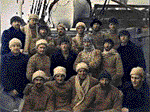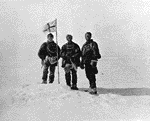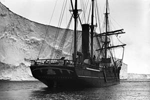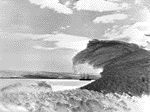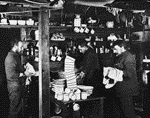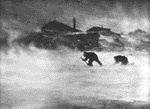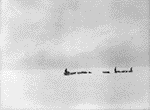Antarctica - Land of hope and glory
from the collection of Urrbrae House, Glen Osmond, South Australia | ||||||||||||
Antarctica is the coldest and most desolate place on Earth, a continent twice as big as Australia, with the South Pole in the centre. Imagine being in a place where the sun never rises in winter - it is dark for six months of the year, with blizzards and freezing winds that blow at over 100km/h. The temperature can drop to an incredibly cold 89 degrees below zero! In summer it doesn’t get much warmer, but the sun stays in the sky for the entire six months. This means the Antarctic summer is one long continuous day. Did you know that the Earth is millions and millions of years old? Many things have changed in that time. 150 million years ago, Antarctica was a very different place - it had a much warmer climate and was home to plants and animals. Over time, Antarctica has changed so much that now the fossils of those ancient inhabitants are buried under a deep layer of ice. No plants could survive in the Antarctic today and the only animals living there are sea creatures - penguins and seals, which live at the very edge of the continent so they can hunt for food in the ocean. A very small number of human explorers and scientists visit for months at a time to do research, but none live there permanently. It was over 100 years ago that people first visited Antarctica. Douglas Mawson was an Australian scientist and explorer. He wanted to study the geology of Antarctica to find out more about how our planet has changed over time, so he joined an early British expedition led by Ernest Shackleton in 1907. On this, his first visit to the Antarctic, Mawson and two others travelled for four months across the plains of ice dragging sledges carrying equipment, food and other supplies. They were the first people to reach the South Magnetic Pole. Mawson also took part in the first climb to the top of the active volcano Mt Erebus; drawing, collected rock samples and taking photographs as the group made its way to the summit. At the end of this expedition and after his return to Australia, Mawson was keen to revisit Antarctica to continue his research. He organised and led the first Australian expedition to the Antarctic in 1911. There he and his team studied many things, including geology, the weather and the oceans. Most of the team who accompanied Mawson had never lived in cold conditions before, but they stayed for 3 years. Can you think of the difficulties they had while living in Antarctica for such a long time? When the ship Aurora left Mawson and his team of 18 men on the edge of the Antarctic continent in 1911, they built a Main Base Camp at Cape Denison and waited through the six months of the dark Antarctic winter. When summer came, they split into five teams and set off in different directions on journeys of discovery. Imagine exploring Antarctica - a mysterious place like nowhere else on Earth. They crossed plains and rivers of ice called glaciers, found the first meteorite ever to be discovered in the Antarctic and saw spectacular rock and ice formations. Travelling in Antarctica is a dangerous venture and all of the teams had to overcome terrible difficulties. Mawson lost both his companions - one fell to his death in a crevasse in the ice and the other became ill and died. Mawson walked alone across the ice for weeks, dragging a sledge over 160km to make it back to Base Camp. Mawson embarked on many other journeys of scientific discovery during his life, both within Australia and on the Antarctic continent. He thought it was very important for us to understand and care for the environments in which we live. Through his research, he made many contributions to our understanding of Antarctica and our planet. He was passionate about preserving natural environments and fought to have wildlife sanctuaries set up in Antarctica. Mawson called the Antarctic continent his ‘Land of Hope and Glory’. Why do you think he might have felt this way?
|
| |||||||||||



